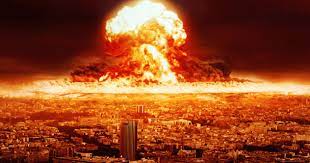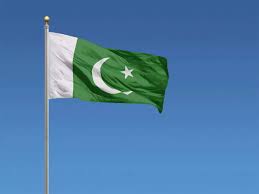Conflict Decades: Significant Wars Since World War II
In a new wave of hostilities between the two nations after an extraordinary surprise onslaught from Gaza last Saturday, at least 900 people have apparently been murdered in Israel — a devastating toll on a magnitude the country has not witnessed in decades — while more than 300 have been slain in Gaza.
A recurrent point of dispute, the Israeli-Palestinian issue, which has dogged the Middle East for decades, has come to light with the latest spate of assaults. The dynamics, allies, and tactics of both sides in the Israel-Palestine conflict were significantly shaped by the Cold War even after World War II. In general, the United States backed Israel by giving it financial aid, diplomatic support, and military help. The Palestine Liberation Organization (PLO) and other Arab countries opposed to Israel were backed by the Soviet Union, on the other side.
for the last 70 years, several countries have had significant upheavals and battles for land and religion.
Here is a look at some of the significant wars that occurred following World War II.
(1947–1991) Cold War
The Cold War, which saw tensions between the United States and the Soviet Union as well as its respective allies, the Western Bloc and the Eastern Bloc, began after the conclusion of World War II. The battle was referred to as the “Cold War” because it included more ideological than actual military fighting between the two primary enemies. The superpowers often sponsored opposite parties in crises throughout the globe, leading to proxy wars in areas like Korea, Vietnam, Afghanistan, and Central America instead of direct military engagement. The end of the war resulted in a number of arms control treaties and agreements between the US and Russia (formerly the Soviet Union), with the main goal of reducing the nuclear arsenals of both superpowers. On the other hand, new security threats such as non-state actors involved in terrorism, cyberwarfare, and the proliferation of WMDs emerged.
Palestine-Israeli War (1948–present)
Following the Israeli Declaration of Independence, there were many military clashes in 1948 between Israeli troops and other Arab armies. A number of armistice agreements were struck by the newly established State of Israel in 1949 with Arab nations that had declared war on it. However, the area has continued to experience violence. In 1967, Israel took the Gaza Strip from Egypt, and in 2005 it withdrew its forces. Gaza was taken over by Hamas in 2007. Since then, the area has been under a severe siege by Israel and Egypt that includes air and naval blockades. Prior to the most recent assault, the two sides last engaged in hostilities in 2021, which resulted in at least 250 deaths in Gaza and 13 deaths in Israel.
Korean Conflict (1950–1953)
The start of the Korean War, which was fought between North Korea and South Korea from 1950 to 1953, intensified the Cold War. On June 25, 1950, North Korea attacked the South, which was backed by the United States and supported by the Soviet Union. Three years of brutal fighting resulted in 3 million fatalities and tens of thousands of wounded. However, there was no official peace treaty when the conflict came to a close. Even now, the Korean Peninsula is still split.
(From 1955 until 1975)
The Vietnam War was a protracted, brutal battle between North Vietnam, which was backed by China and the Soviet Union, and South Vietnam, which was backed by the US, South Korea, Australia, and a number of other US allies. The Vietnam War, which is sometimes referred to as one of the Cold War’s proxy conflicts, came to an end in April 1975 when the North Vietnamese Army seized Saigon, the nation’s capital. The number of war-related fatalities varies greatly since Vietnam didn’t publish its official estimate of war dead until 1995, at which point it said that there may have been up to 2 million civilians on both sides and around 1.1 million North Vietnamese and Viet Cong combatants.
Gulf Wars (March–April 2003 and January–February 1991)
The military buildup between August 1990 and January 1991, known as Operation Desert Shield, and the aerial bombing operation against Iraq on January 17, 1991, known as Operation Desert Storm, were the two main stages of the armed war between Iraq and a US-led coalition of twenty-one countries. On February 28, 1991, Kuwait was liberated under American leadership, bringing an end to the conflict.
After the Twin Towers attack on 9/11, which put the United States in danger, and Iraq’s alleged continued possession and production of WMD, then-US President George W. Bush in 2002 gave Saddam Hussain 48 hours to leave the country or face further action. The US started a full-scale strike by dropping numerous precision-guided bombs on a bunker complex where the Iraqi president was allegedly present after Saddam refused to depart Iraq. By the end of 2011, the Bush administration committed to withdrawing all combat forces from Iraq.
Ukraine Conflict, 2014–Present
2014 saw the start of the current international crisis between Russia and Ukraine. Following Russia’s annexation of Crimea, which marked the first time a European state had seized another state’s territory since World War II, armed fighting broke out in eastern Ukraine. The Donbas war, the worst in Europe since the Balkan Wars of the 1990s, claimed the lives of over 14,000 people between 2014 and 2021. On February 24, 2022, a new conflict started when Russia attacked Ukraine from the north, east, and south. According to one source cited by the New York Times, Ukraine has endured between 124,500 and 131,000 casualties as of February 2023, including as many as 17,500 combat fatalities. Since the Second World War, the invasion has been regarded as the largest assault on a European nation.







